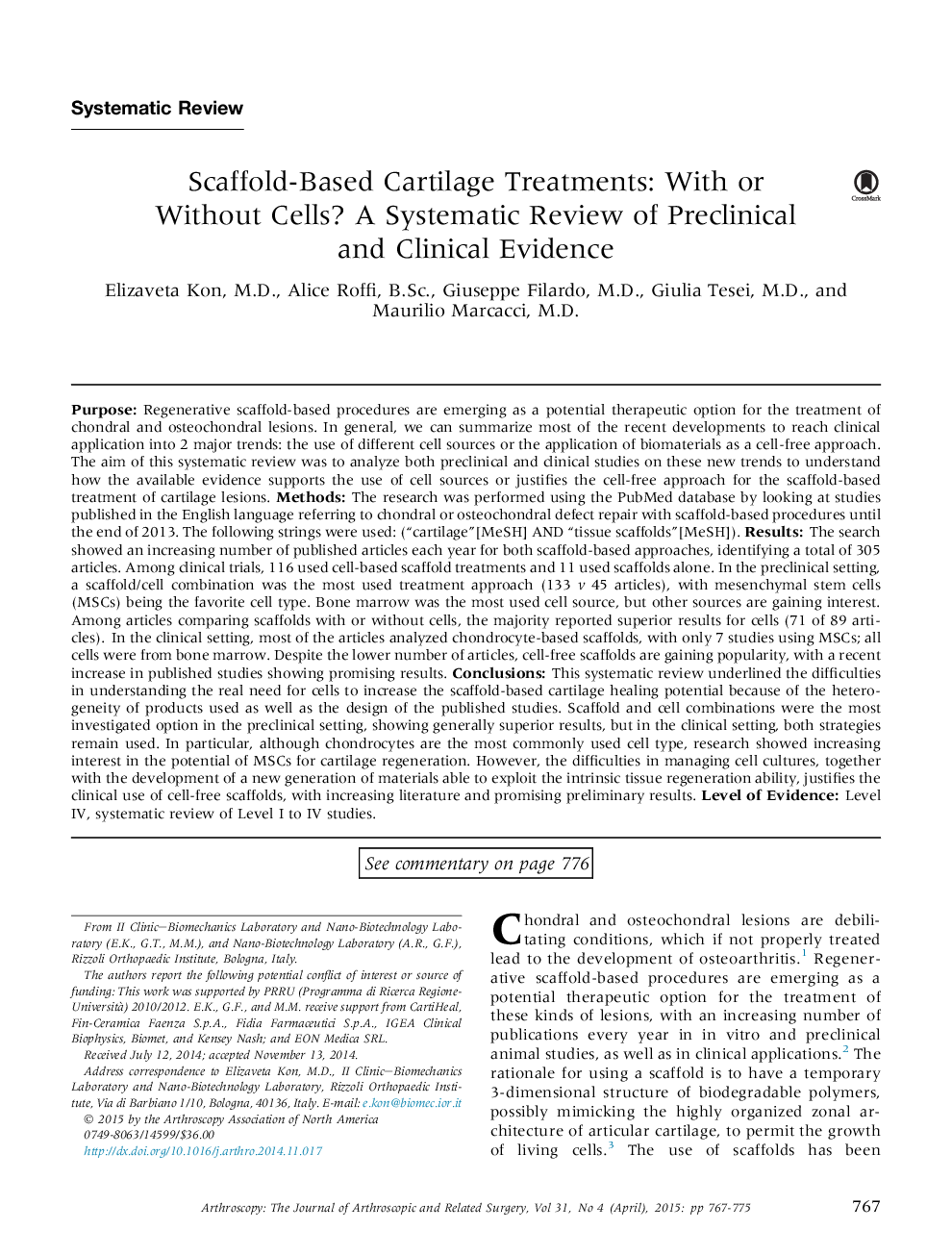| Article ID | Journal | Published Year | Pages | File Type |
|---|---|---|---|---|
| 4042693 | Arthroscopy: The Journal of Arthroscopic & Related Surgery | 2015 | 9 Pages |
PurposeRegenerative scaffold-based procedures are emerging as a potential therapeutic option for the treatment of chondral and osteochondral lesions. In general, we can summarize most of the recent developments to reach clinical application into 2 major trends: the use of different cell sources or the application of biomaterials as a cell-free approach. The aim of this systematic review was to analyze both preclinical and clinical studies on these new trends to understand how the available evidence supports the use of cell sources or justifies the cell-free approach for the scaffold-based treatment of cartilage lesions.MethodsThe research was performed using the PubMed database by looking at studies published in the English language referring to chondral or osteochondral defect repair with scaffold-based procedures until the end of 2013. The following strings were used: (“cartilage”[MeSH] AND “tissue scaffolds”[MeSH]).ResultsThe search showed an increasing number of published articles each year for both scaffold-based approaches, identifying a total of 305 articles. Among clinical trials, 116 used cell-based scaffold treatments and 11 used scaffolds alone. In the preclinical setting, a scaffold/cell combination was the most used treatment approach (133 v 45 articles), with mesenchymal stem cells (MSCs) being the favorite cell type. Bone marrow was the most used cell source, but other sources are gaining interest. Among articles comparing scaffolds with or without cells, the majority reported superior results for cells (71 of 89 articles).In the clinical setting, most of the articles analyzed chondrocyte-based scaffolds, with only 7 studies using MSCs; all cells were from bone marrow. Despite the lower number of articles, cell-free scaffolds are gaining popularity, with a recent increase in published studies showing promising results.ConclusionsThis systematic review underlined the difficulties in understanding the real need for cells to increase the scaffold-based cartilage healing potential because of the heterogeneity of products used as well as the design of the published studies. Scaffold and cell combinations were the most investigated option in the preclinical setting, showing generally superior results, but in the clinical setting, both strategies remain used. In particular, although chondrocytes are the most commonly used cell type, research showed increasing interest in the potential of MSCs for cartilage regeneration. However, the difficulties in managing cell cultures, together with the development of a new generation of materials able to exploit the intrinsic tissue regeneration ability, justifies the clinical use of cell-free scaffolds, with increasing literature and promising preliminary results.Level of EvidenceLevel IV, systematic review of Level I to IV studies.
